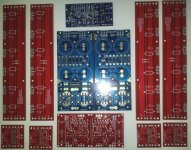I'm a little confused about JFET matching...
Should the two K170's be matched as close as possible(say 9.5mA & 9.3mA) and the two J74's be matched as close as possible(say 8.5 & 8.7mA) for Idss, OR should all 4 devices have almost the same identical Idss?
Matching all 4 devices so that they have the same identical Idss sounds like it would be VERY difficult to do, but I'm asking because I'm not sure.
Thank you...
Should the two K170's be matched as close as possible(say 9.5mA & 9.3mA) and the two J74's be matched as close as possible(say 8.5 & 8.7mA) for Idss, OR should all 4 devices have almost the same identical Idss?
Matching all 4 devices so that they have the same identical Idss sounds like it would be VERY difficult to do, but I'm asking because I'm not sure.
Thank you...
I am converting my BA-3 to 32 VDC rails.
I am using a 24 VDC Antek xfmr and 35V Panasonic caps.
Under no load I am seeing a hair over 35 VDC.
Am I OK? Will the voltage drop enough under load to be safe? Will the Linear Systems FETs in the front end blow if they see 35 VDC? Do I need a dropping resistor between the bridge and the first capacitor?
Note: all risk is on me here. I am just looking for some advice.
Thanks
Mike
I am using a 24 VDC Antek xfmr and 35V Panasonic caps.
Under no load I am seeing a hair over 35 VDC.
Am I OK? Will the voltage drop enough under load to be safe? Will the Linear Systems FETs in the front end blow if they see 35 VDC? Do I need a dropping resistor between the bridge and the first capacitor?
Note: all risk is on me here. I am just looking for some advice.
Thanks
Mike
Some photos from the upcoming BA-3 guide -

Elevate R10 and R11, you will need to clip across the leads to set the bias.

The most logical place (in my mind anyway...) for the FE board is mounted here, near the input jacks and (although not visible in this photo) close to the PSU connections.

This location for the bias boards is convenient. Also the fact that the Mosfet board has connections on both sides makes it possible to make a mirror-image layout, keeping all the wiring in the back of the chassis.
And although not obvious in this photo, it would be possible to mount 2 sets of Mosfets to the heatsink on the UMS bolt pattern - one PCB will be mounted to the heatsink and one PCB will be on the chassis floor, but all the Mosfet will be in the existing holes.
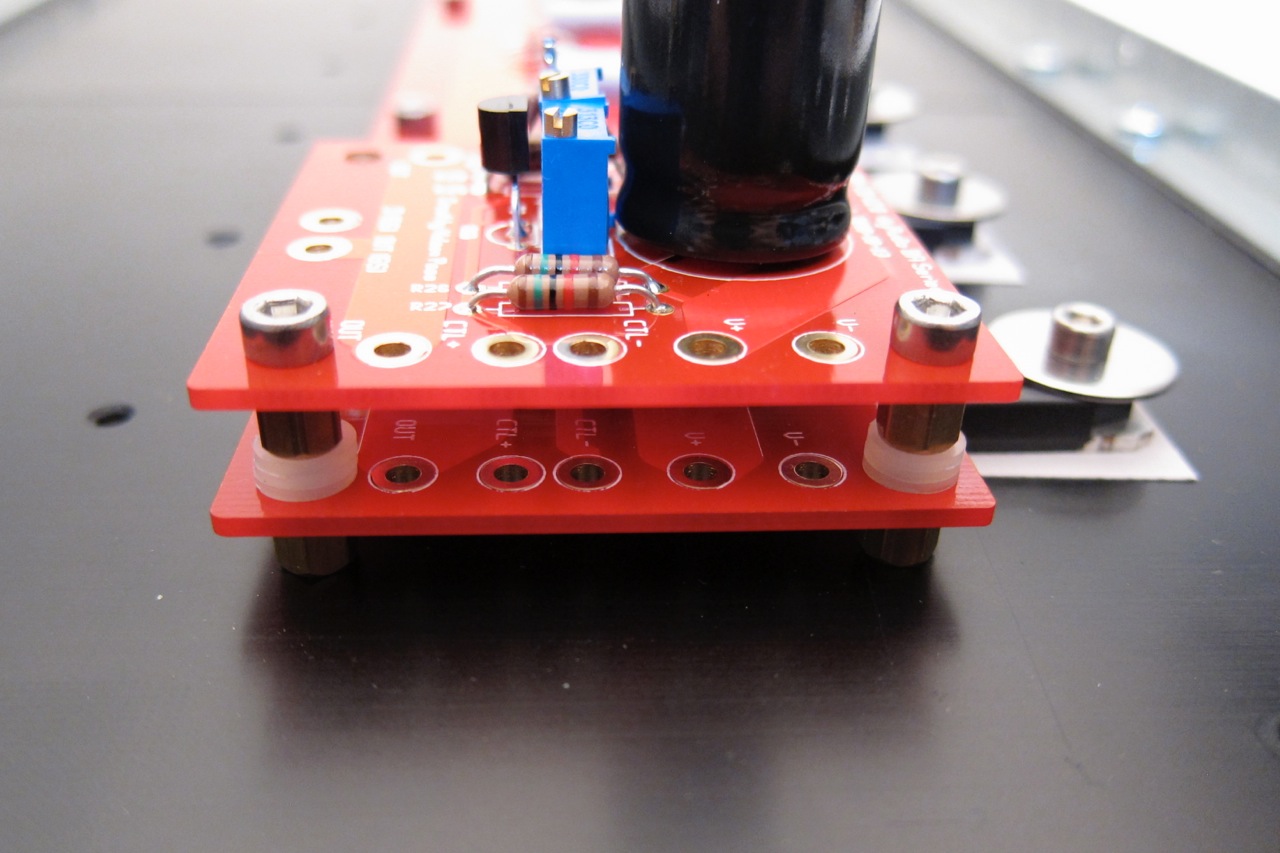
The bias board needs to be spaced a little bit higher than the stock standoffs allow, so the addition of a few nylon washers is easy. Connections have not been made yet.
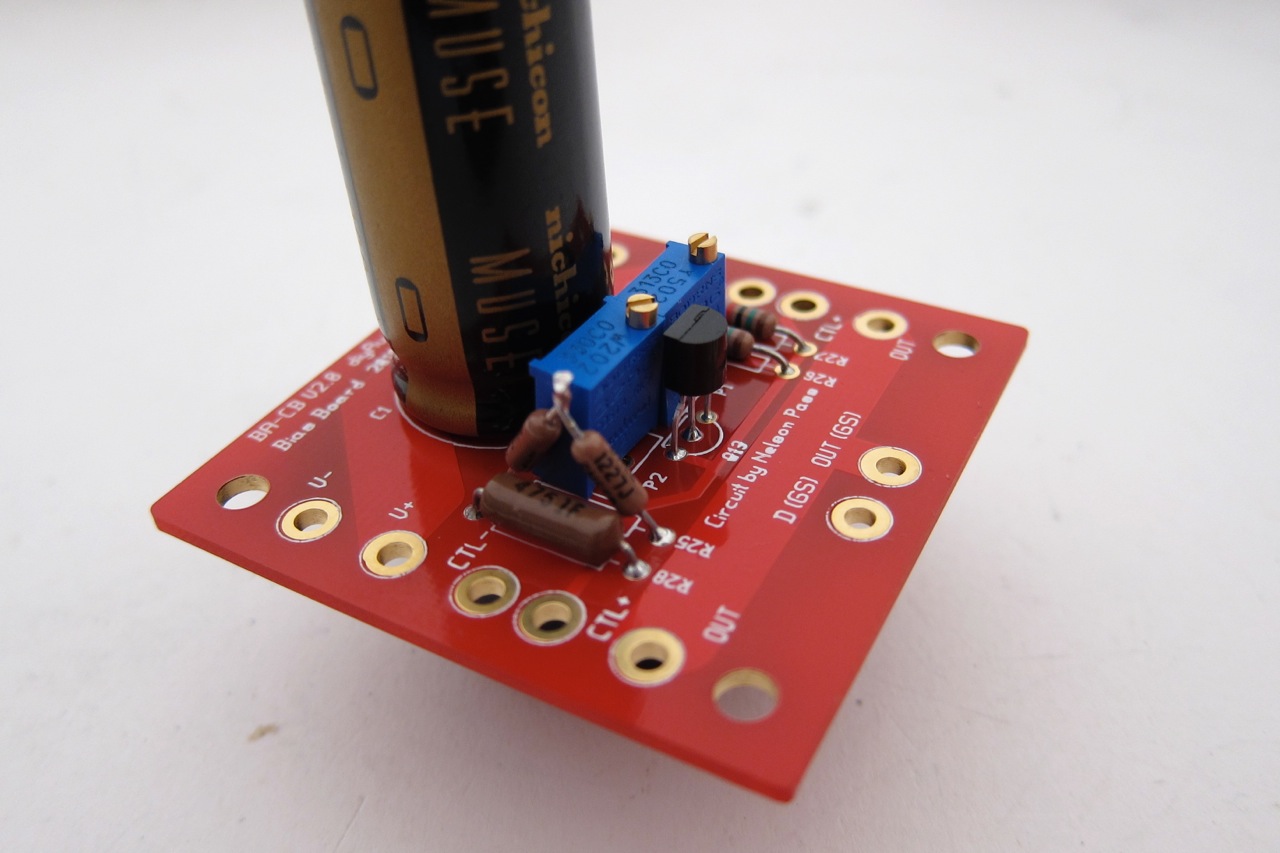
In order to get more swing in the offset circuit I think it's advisable to make R25 about 13K (I think I have a 10K and 2.21K in series, that was the closest I had in my parts box) and make P2 2K. This will give the circuit more ability to zero the output offset, and allow for a wider variation in Mosfets.
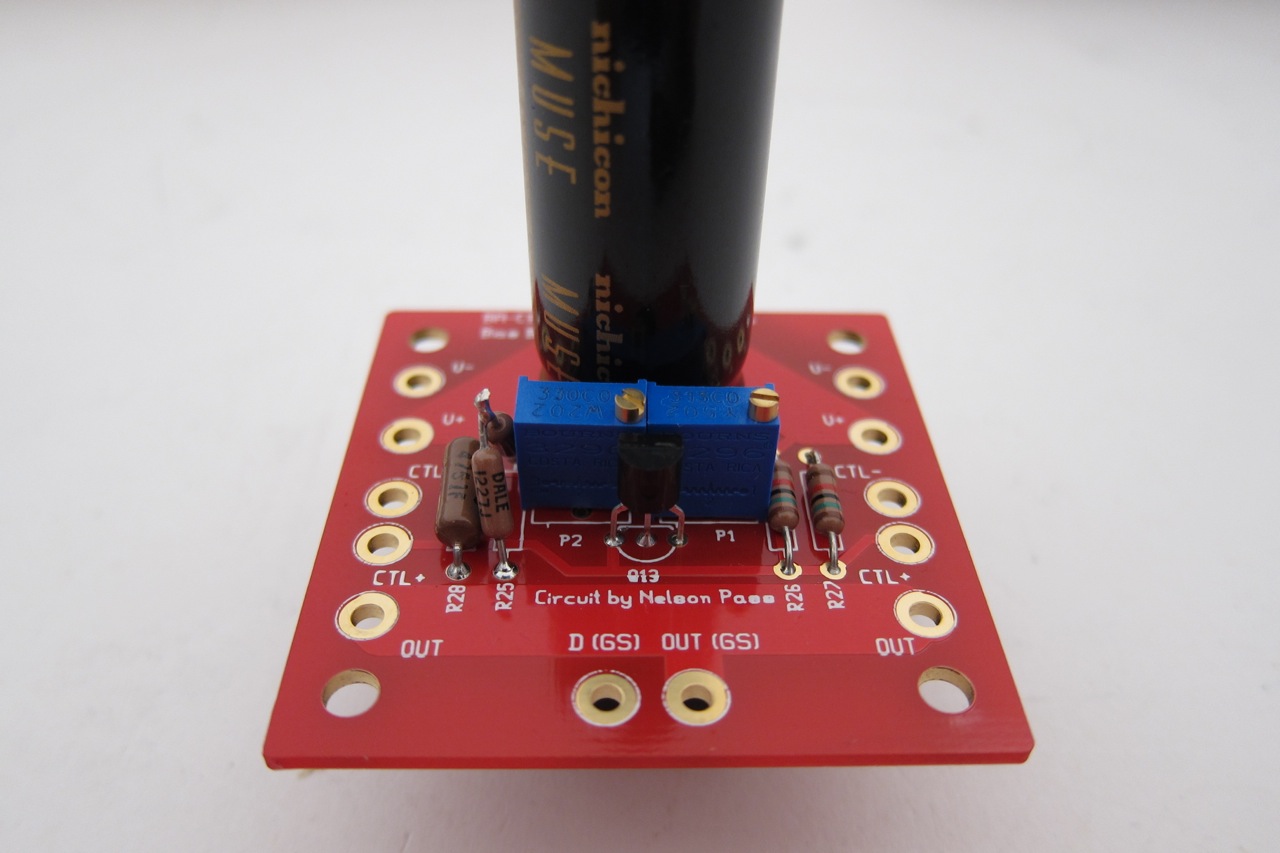

Elevate R10 and R11, you will need to clip across the leads to set the bias.

The most logical place (in my mind anyway...) for the FE board is mounted here, near the input jacks and (although not visible in this photo) close to the PSU connections.

This location for the bias boards is convenient. Also the fact that the Mosfet board has connections on both sides makes it possible to make a mirror-image layout, keeping all the wiring in the back of the chassis.
And although not obvious in this photo, it would be possible to mount 2 sets of Mosfets to the heatsink on the UMS bolt pattern - one PCB will be mounted to the heatsink and one PCB will be on the chassis floor, but all the Mosfet will be in the existing holes.

The bias board needs to be spaced a little bit higher than the stock standoffs allow, so the addition of a few nylon washers is easy. Connections have not been made yet.

In order to get more swing in the offset circuit I think it's advisable to make R25 about 13K (I think I have a 10K and 2.21K in series, that was the closest I had in my parts box) and make P2 2K. This will give the circuit more ability to zero the output offset, and allow for a wider variation in Mosfets.

Last edited:
You're good but you are really, really s l o w. 
Just kidding - glad to see the build is in progress. I actually started a Digikey order earlier this morning. I'm holding back a bit to see if you come across any other BOM changes.
Been collecting - so ready when you are.

Just kidding - glad to see the build is in progress. I actually started a Digikey order earlier this morning. I'm holding back a bit to see if you come across any other BOM changes.
Been collecting - so ready when you are.
Attachments
Last edited:
Yes, I've been really busy and wish I had more time for this lately...
As for BOM changes, the only other thing I've done is increase P1 and P2 on the FE from 500ohm to 1K, again for a bit more swing to accommodate a wider range of fets. The FE works with both Toshiba K2013/J313 and the equivalent Fairchild Mosfet FQP3N30/FQP3P20. It's a remarkably nice circuit and sounds great with either.
I have already built one with a friend of mine, so this one is mainly for the photographs and guide.
As for BOM changes, the only other thing I've done is increase P1 and P2 on the FE from 500ohm to 1K, again for a bit more swing to accommodate a wider range of fets. The FE works with both Toshiba K2013/J313 and the equivalent Fairchild Mosfet FQP3N30/FQP3P20. It's a remarkably nice circuit and sounds great with either.
I have already built one with a friend of mine, so this one is mainly for the photographs and guide.
More photos -

Front-end board stuffed


The FE mounted to the back panel. The PSU wiring is on the back of the PCB.
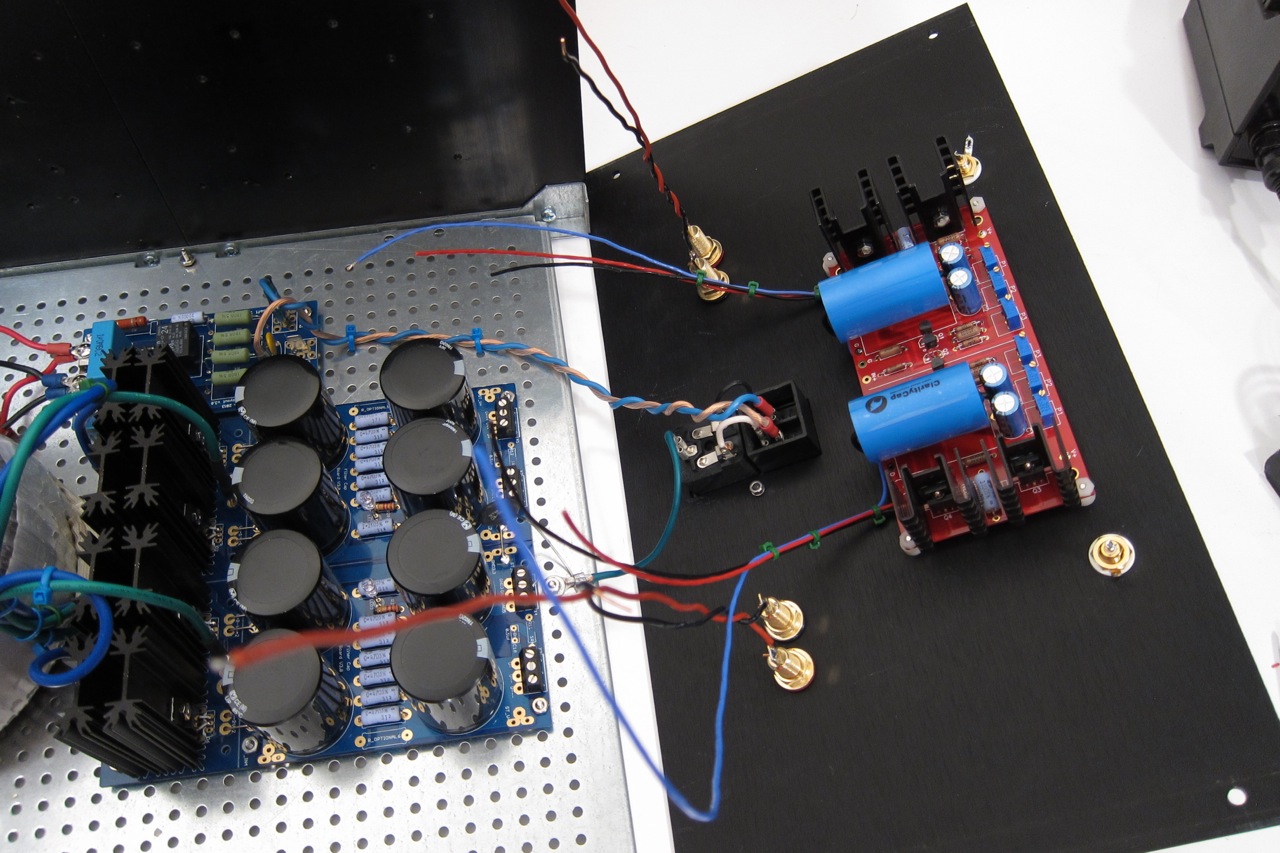
The modular aspect of the diyAudio chassis is very helpful when trying to wire something up against a wall - just loosen it and make lots of room.
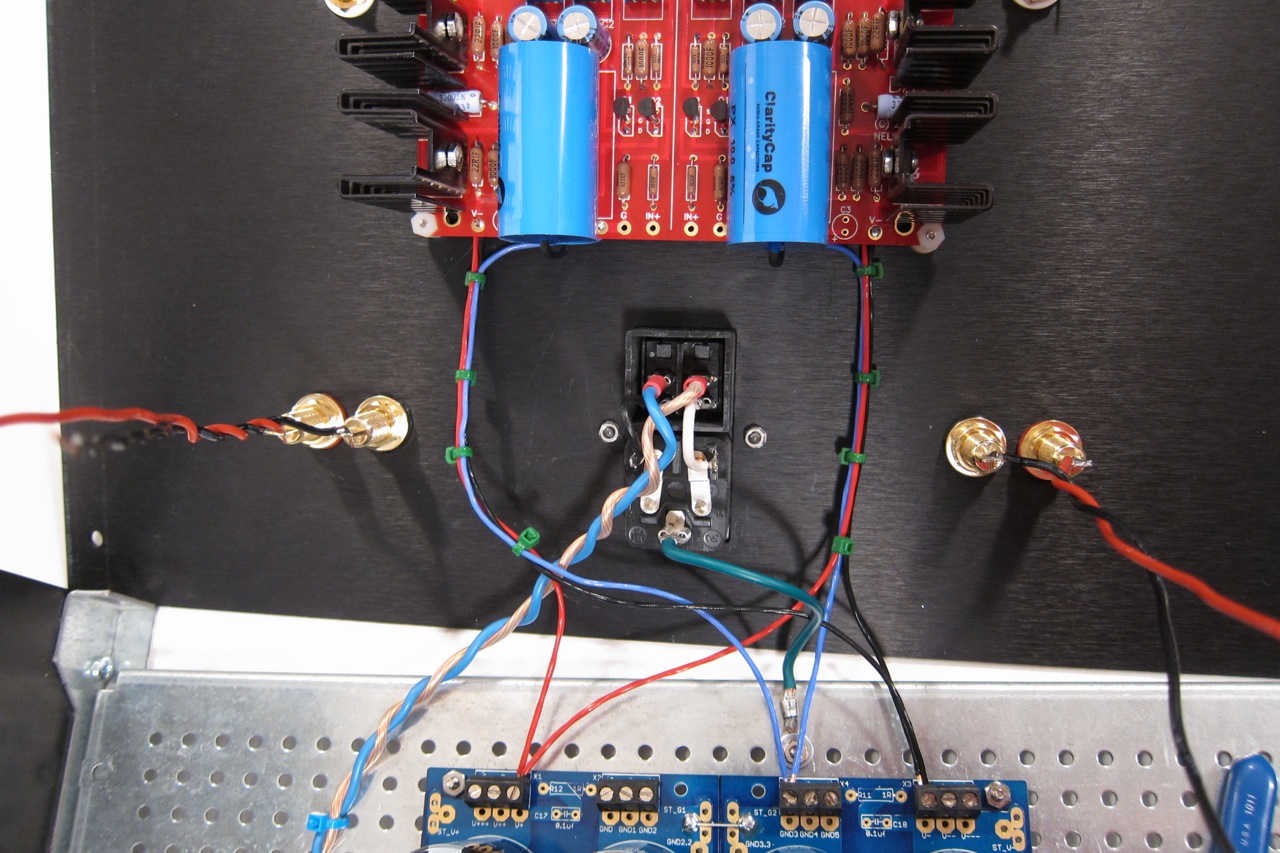
Power wiring.
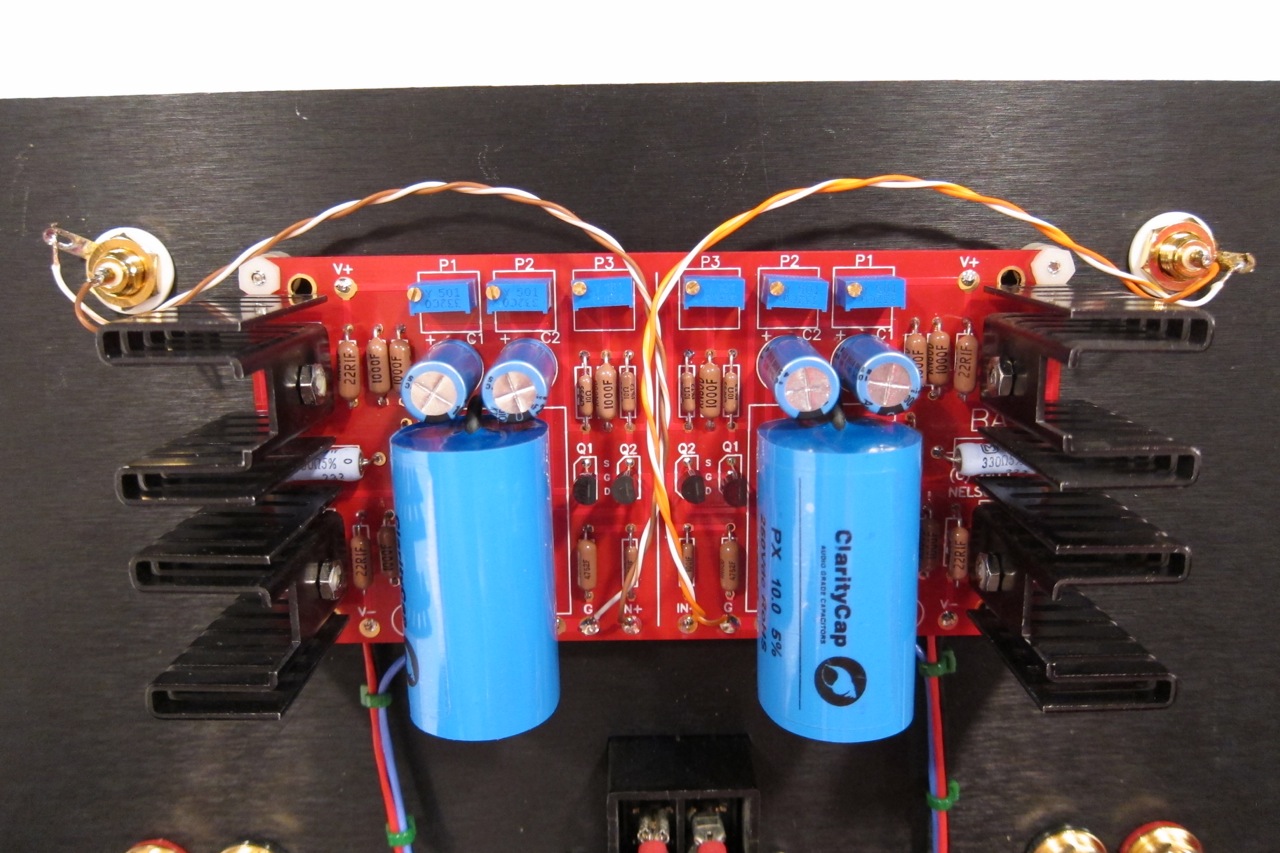
Wired to the inputs. The only connection left to make from the FE to the Output board is "D", which is the (voltage amplified) signal.

Front-end board stuffed


The FE mounted to the back panel. The PSU wiring is on the back of the PCB.

The modular aspect of the diyAudio chassis is very helpful when trying to wire something up against a wall - just loosen it and make lots of room.

Power wiring.

Wired to the inputs. The only connection left to make from the FE to the Output board is "D", which is the (voltage amplified) signal.
- Home
- Amplifiers
- Pass Labs
- Burning Amp BA-3
